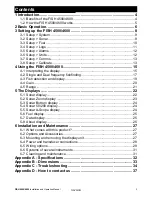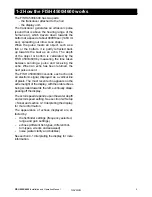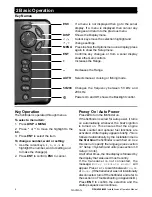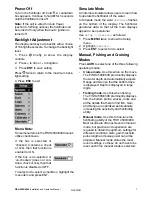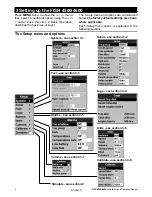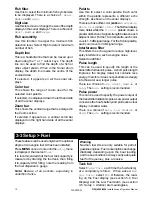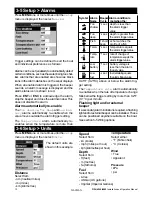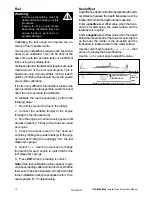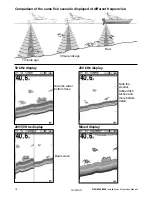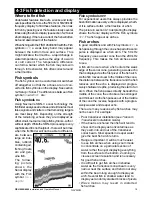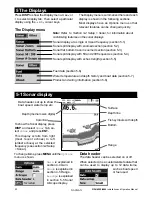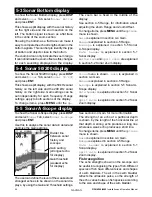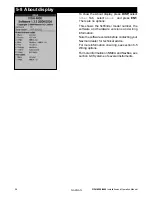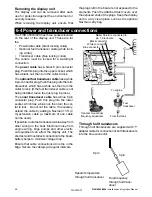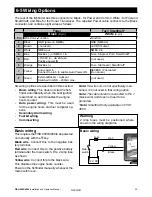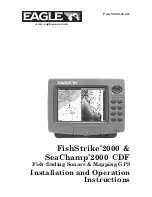
When to use 200 kHz
The 200 kHz frequency is especially suitable
for use in shallow and medium depth water,
typically less than 500 ft. (150 m) and while
running at speed.
At 200 kHz, the narrow cone reduces any noise
caused by air bubbles.
The 200 kHz frequency generates a higher
definition pulse which produces little shadow and
returns excellent detail over a small area of bottom.
Therefore, it gives excellent bottom discrimination
capability and is particularly good at showing indi-
vidual fish, including bottom dwellers.
When to use 50 kHz
The 50 kHz frequency is particularly suitable for
use in deep water, typically greater than 500 ft.
(150 m).
At 50 kHz, the cone covers an area of water
about four times wider than the 200 kHz cone
and penetrates to a greater depth with minimal
loss of the return signal.
However, it produces a lower definition display
with more shadow compared to the 200 kHz
frequency. This means that a group of small fish,
for example, could be displayed as a single item,
while any fish very close to the bottom may not
be found at all.
This frequency is useful for getting a deep, wide
overview of the area so that any areas of interest
can be identified and then examined in detail with
the 200 kHz frequency.
Wide angle,
less detailed
50 kHz cone
Narrow angle,
more detailed
200 kHz cone
Mixed frequency
4-2 Single and Dual frequency fishfinding
When to use 50/200 kHz
Operating the FISH 4500/4600 at both 50 kHz
and 200 kHz simultaneously on a split display
can be very useful when operating in shallow to
medium water, typically less than 500 ft. (150 m),
because the 50 kHz section of the display shows
the general area, while the 200 kHz section can
be viewed simultaneously for a more detailed
look at any interesting feature.
Mixed frequency
The Mixed frequency combines the 200 kHz and
the 50 kHz echoes on one sonar display, filling in
detailed echoes in the centre of the sonar cone.
FISH 4500/4600
Installation and Operation Manual
17
NAVMAN
Summary of Contents for FISH 4500
Page 33: ......

